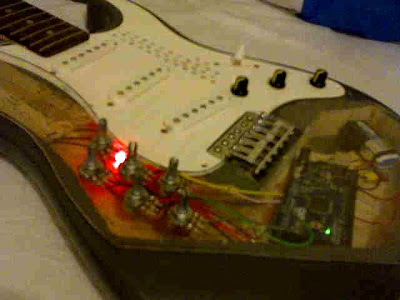Yesterday, I published my first music app to the Android Market. The app is pretty unhelpful, inefficient and ergonomically unsatisfying, but the point is that it works, it's been published, and it was completed in roughly a day. I wanted to go through the process of designing, writing and publishing an Android app to see what was difficult and what wasn't. Here are some things I learned:
1) Although audio latency in Android is woeful, the stability of the audio stream seems pretty decent.
2) Flash makes it very easy to write and package apps, but it's very easy to slow an app to a standstill if you're not careful.
3) The search functionality in Android Market is geared towards showing people the top twenty apps for a particular search term, which is not great for small developers.
4) I've just realised that this blog has become nerdy and technical. Sorry. Here is the link to the app:
